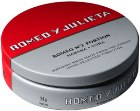Have Cigarette Brands Failed as Snus Brands?
The tobacco industry is one of having one’s ducks in a row while jumping through hoops. The one constant, as it is in any mega-corporate environment, is that a bad idea, if well-placed within the organization, can turn into company policy. Worse yet, it can turn into a brand, or affect a brand’s performance. This can happen despite repeated research, and is often justified by economic models which can take something fuzzy like “brand equity” and quantify it into a five-year marketing plan.
The snus business is awash in fiction paraded as fact, both in terms of what has occurred since Sweden’s smaller independent snus companies were gobbled up by Big Tobacco.
MULTINATIONAL CIGARETTE BRANDS WILL SELL AS SNUS
Nielsen research in 2005 which my company had purchased for the Swedish Market clearly indicated that focus groups were averse to buying a snus product with a cigarette brand name. The group clearly felt that cigarette brands represent the unhealthy lifestyle one leaves behind for snus. This could be interpreted as brand loyalty to Swedish Match, who had almost 95% share in Sweden at the time, but it can also be seen by the failure of those brands, launched anyway, to succeed.
Lucky Strike
 When BAT launched Lucky Strike in 2006, they did it as they normally do with Teir 1 strategic brands: Made it nearly unavailable. Seeding top Stockholm bars and restaurants in trendy Sodermalm and storied Ostermalm with point-of-sale material and product, they failed to recognize that no one actually buys snus in these places. As a low-share cigarette brand (<1%), the brand was recognized by Swedes clearly as an American cigarette. No sales. BAT expressed 'satisfaction' with the initial test results (0.0004% marketshare according to tax estimates end 2005), and the bullshit began unfolding.
When BAT launched Lucky Strike in 2006, they did it as they normally do with Teir 1 strategic brands: Made it nearly unavailable. Seeding top Stockholm bars and restaurants in trendy Sodermalm and storied Ostermalm with point-of-sale material and product, they failed to recognize that no one actually buys snus in these places. As a low-share cigarette brand (<1%), the brand was recognized by Swedes clearly as an American cigarette. No sales. BAT expressed 'satisfaction' with the initial test results (0.0004% marketshare according to tax estimates end 2005), and the bullshit began unfolding.
Prince
 The top Scandinavian cigarette brand, Prince had seen steady declines in sales for years. The reason? An aging male demographic. The mid-2000s saw massive investments by Scandinavian Tobacco in Sweden behind a newly re-designed and expanded portfolio. Tapping cousin Fiedler & Lundgren, Prince snus was released in 2006 with the famous logo on a red background, to be co-merchandised with the cigarettes and the massive point-of-purchase spend. It was managed by ST’s cigarette division. The failure? Research was showing that the bulk of those who had quit smoking Prince were over 50, and had quit using tobacco altogether. Prince is also considered to be a brand smoked ‘by your dad.’ The young, urban demographic favored by Scandinavian Tobacco had no interest. After a white portion was launched in 2007, the snus was quickly delisted and disappeared.
The top Scandinavian cigarette brand, Prince had seen steady declines in sales for years. The reason? An aging male demographic. The mid-2000s saw massive investments by Scandinavian Tobacco in Sweden behind a newly re-designed and expanded portfolio. Tapping cousin Fiedler & Lundgren, Prince snus was released in 2006 with the famous logo on a red background, to be co-merchandised with the cigarettes and the massive point-of-purchase spend. It was managed by ST’s cigarette division. The failure? Research was showing that the bulk of those who had quit smoking Prince were over 50, and had quit using tobacco altogether. Prince is also considered to be a brand smoked ‘by your dad.’ The young, urban demographic favored by Scandinavian Tobacco had no interest. After a white portion was launched in 2007, the snus was quickly delisted and disappeared.
Now why is this “bullshit unfolding”?
After BAT launched “Lucky Strike,” the Investor Relations people started calling. “Snus” is the new buzzword, and what are we doing about it? What brands do we have to launch? What about the EU? Will Philip Morris get into the picture? Imperial snapped up most of ‘Skruf’ as part of a Northern Europe expansion strategy. PMI bought ‘Rocker.’ Gallaher had been stuck at 2.5% with Gustavus, and had delisted non performers such as Grand XL and StrongCut. We decided to launch a cigarette brand. But not one from Sweden.
LD
 A discount cigarette brand developed by US-owned “Liggett-Ducat” in Moscow in the late 1990s during the Russian financial crisis, the product appealed to the growing segment of American Blend smokers there who could no longer afford international brands. Gallaher bought Liggett-Ducat in 2000 from the parent of Liggett-Vector, and the cigarette became a staple in the market, expanding as well into Eastern Europe, Africa and Asia. It’s now a JTI strategic value brand. As part of that original Russian development team, I asked management to green-light the product as a snus in Sweden before the launch of the cigarette. LD was notorious in Denmark in 2005 for having stolen 5% cigarette share from Prince overnight, so I was eager to do the same in Sweden, but at a break-even price, with all margin going to retail. Four varieties, launch at a breakneck pace, gave Gallaher a company share at it height of 7% according to tax authority records by end 2005. Competition from Granit was fierce, and it was the launch of Kronan the next year (also under pressure from shareholders, SM was forced to react) which ended the party. Lack of funds for a continued market assault for no profit, and an eventual portfolio rationalization allowed it to settle. But 4.5% marketshare is the best a ‘cigarette’ brand would do. LD was launched as a cigarette in 2006, and then as a rolling tobacco.
A discount cigarette brand developed by US-owned “Liggett-Ducat” in Moscow in the late 1990s during the Russian financial crisis, the product appealed to the growing segment of American Blend smokers there who could no longer afford international brands. Gallaher bought Liggett-Ducat in 2000 from the parent of Liggett-Vector, and the cigarette became a staple in the market, expanding as well into Eastern Europe, Africa and Asia. It’s now a JTI strategic value brand. As part of that original Russian development team, I asked management to green-light the product as a snus in Sweden before the launch of the cigarette. LD was notorious in Denmark in 2005 for having stolen 5% cigarette share from Prince overnight, so I was eager to do the same in Sweden, but at a break-even price, with all margin going to retail. Four varieties, launch at a breakneck pace, gave Gallaher a company share at it height of 7% according to tax authority records by end 2005. Competition from Granit was fierce, and it was the launch of Kronan the next year (also under pressure from shareholders, SM was forced to react) which ended the party. Lack of funds for a continued market assault for no profit, and an eventual portfolio rationalization allowed it to settle. But 4.5% marketshare is the best a ‘cigarette’ brand would do. LD was launched as a cigarette in 2006, and then as a rolling tobacco.
Montecristo/Romeo y Julieta
 Besides Cohiba, MC and R&J are the most well known Cuban cigar brands in the world. Despite Sweden’s almost non-existent cigar-smoking population, the brand names resonate with the population. As high-priced and high-quality luxury snuses from Taboca AS, they do well in tobacconists and neighborhoods where the well-heeled live. They are also a weekend luxury for bar-hoppers in the large cities. However, the reality of two massive excise changes and a recession have kept the brands out of the mass market. In fact, Taboca brand, unknown before 2006, has far outpaced its two expensive stablemates in volume sales throughout Sweden. Ex-smokers do not want to know about it.
Besides Cohiba, MC and R&J are the most well known Cuban cigar brands in the world. Despite Sweden’s almost non-existent cigar-smoking population, the brand names resonate with the population. As high-priced and high-quality luxury snuses from Taboca AS, they do well in tobacconists and neighborhoods where the well-heeled live. They are also a weekend luxury for bar-hoppers in the large cities. However, the reality of two massive excise changes and a recession have kept the brands out of the mass market. In fact, Taboca brand, unknown before 2006, has far outpaced its two expensive stablemates in volume sales throughout Sweden. Ex-smokers do not want to know about it.
Pall Mall
 My personal knowledge of Pall Mall is limited to witnessing the launch of the product in 2006 in Sweden. Anecdotal evidence seems to point to a similar lack of momentum for this youth-oriented cigarette brand as a snus..
My personal knowledge of Pall Mall is limited to witnessing the launch of the product in 2006 in Sweden. Anecdotal evidence seems to point to a similar lack of momentum for this youth-oriented cigarette brand as a snus..
Camel Snus (Sweden)
 JTI was introduced to snus prior to its purchase of Gallaher by Gallaher, as their sales agent in Sweden for Camel cigarettes. I used to joke with their Geneva management every month about when the first order would come in for snus. Well, CAMEL Snus is here and it’s good. Will JTI break the mold? All the snuses discussed above were good as well and quality was never an issue. Time and investment will tell.
JTI was introduced to snus prior to its purchase of Gallaher by Gallaher, as their sales agent in Sweden for Camel cigarettes. I used to joke with their Geneva management every month about when the first order would come in for snus. Well, CAMEL Snus is here and it’s good. Will JTI break the mold? All the snuses discussed above were good as well and quality was never an issue. Time and investment will tell.
Marlboro Snus (Sweden)
 It doesn’t exist. In 2007, Stureplan Restaurant Group, Stockholm’s most prestigious restaurant group, informed me (at Taboca AS) that they were currently awaiting a large offer from Philip Morris for the placement of Marlboro snus in its top locations. Retailers were abuzz that the launch was imminent. Of course, it never came. PM went traditional with 1847. Maybe someone finally started paying attention.
It doesn’t exist. In 2007, Stureplan Restaurant Group, Stockholm’s most prestigious restaurant group, informed me (at Taboca AS) that they were currently awaiting a large offer from Philip Morris for the placement of Marlboro snus in its top locations. Retailers were abuzz that the launch was imminent. Of course, it never came. PM went traditional with 1847. Maybe someone finally started paying attention.
WHY IS IT IMPORTANT?
Could this be the reason snus is off to such a slow start in the US? Were Camel and Marlboro failures before they were launched? Were they launched due to investor expectations that these iconic brands must be launched as snus products, or were they launched because consumer research in the USA showed they had a chance of success? The current lack of action on the US snus market, amidst a strong smokeless market overall, begs that question. Perhaps the ‘complementary’ theory of snus use between cigarettes gave marketing execs in PMUSA and RJR the idea that brand loyalty should cover both product groups? Was it considered a way to make snus more acceptable amongst urban consumers who are most affected by smoking restrictions?
My suspicion is that the Nielsen research may apply in the US market as well.
THE EU
Another theory is that the EU ban, when lifted, may beg the presence of world-class brands as current Swedish brands are too conservative, and that “black cans” may deter EU consumers from trial. With ‘darkening’ markets across the EU, we may never know.
There is no empirical evidence that existing major cigarette/cigar brands will sell as snus. US Camel moves some volume via coupons and freebies, Marlboro is still in limited test, They are both merchandised with cigarettes in the US. Paradoxically, if Swedish Match applies for “reduced” harm status for status in the US, would products called ‘Marlboro’ and ‘Camel’ pass the test? More questions awaiting an answer.
ANDREW ROMEO
Live from New York on SnusCENTRAL.org
About author
You might also like
Big Tobacco’s Advertising ‘WORK-AROUNDS’
In an atmosphere of increasing regulation of tobacco companies, it has become common for them to stretch laws, or work around them in order to advertise their products to adult
Russia, Cigarettes & Snus: What Is To Be Done?
“What is to be Done?” is the title of at least two pre-Communist treatises, one written by Nikolai Chernyshevksy in 1861 (while in prison in St. Petersburg), which called on
SELLING SNUS IN SCANDINAVIA: A PRIMER
It’s difficult being in Big Tobacco and running its snus business in Nordic Europe. It’s even more difficult if you are in Small Tobacco, and don’t have a cigarette business




